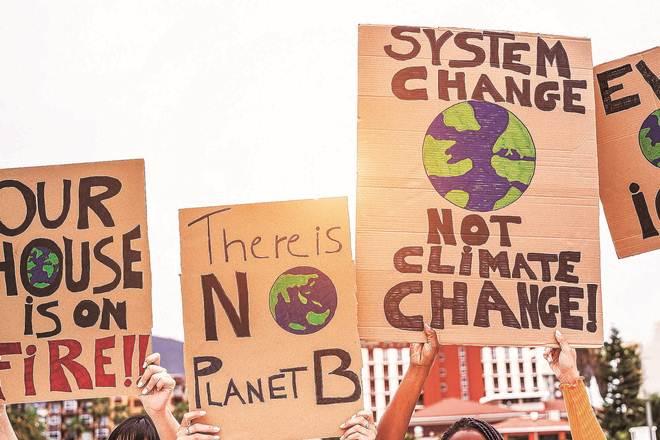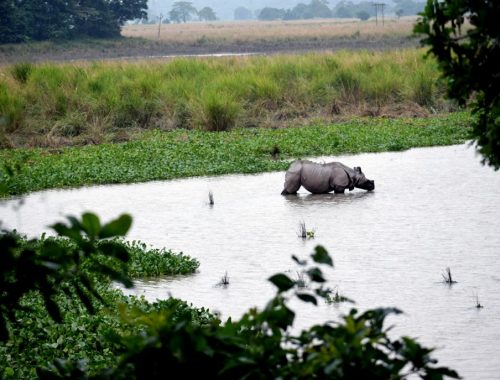New Delhi: The Coronavirus outbreak has threatened the world, as well as disrupted global economies, causing severe economic and market dislocation. Even as toxic pollution levels fell significantly in China between January and February (scientists think Coronavirus is a large part of the reason), satellite images collected by the National Aeronautics and Space Administration (NASA) and the European Space Agency (ESA)—and shared by NASA’s Earth Observatory—have shown a dramatic decline in pollution levels over China. This is partly due to an economic slowdown prompted by the Coronavirus, says NASA.
The images show falling levels of nitrogen dioxide amid record declines in China’s factory activity. Scientists believe that the reduction in levels of nitrogen dioxide—a noxious gas emitted by motor vehicles and industrial facilities—was first apparent near the source of the outbreak in Wuhan city, but then spread across the country. The report by the US agency has compared the first two months of 2019 with the same period this year. The space agency noted that the decline in air pollution levels coincided with restrictions imposed on transportation and business activities, and as millions of people went into quarantine. “This is the first time I have seen such a dramatic drop-off over such a wide area for a specific event,” Fei Liu, an air quality researcher at NASA’s Goddard Space Flight Center, said in a statement published on BBC News. She observed a decline in nitrogen dioxide levels during the economic recession in 2008, but that decrease was more gradual. NASA noted that China’s Lunar New Year celebrations in late January and early February have been linked to decrease in pollution levels in the past, but they normally increase once the celebrations are over. “This year, the reduction rate is more significant than in past years and it has lasted longer,” Liu said.
Factory activity in China fell at a record rate in February. The official measure of manufacturing activity—the Purchasing Manager’s Index (PMI)—dropped to 35.7 from 50 in January. It shows the virus is having a bigger impact than the financial crisis that shook the world in the last decade. PMI figures are a key indicator of a county’s economic health and can move financial markets.
The outbreak in China has affected every sector of tech manufacturing, leading analysts to reduce production estimates for everything from TVs and smartphones to laptops and videogame consoles. While there is no clear evidence, it is also believed that climate change triggered the virus to jump from animals to humans. As climate change is likely to increase the number of future epidemics caused by viruses, scientists feel the rising temperatures are making the immune system less effective.
Apart from China, Italy’s air quality and emissions have been affected. The worst out of all European countries, Italy saw a steep fall in industrial activity and road traffic, amounting to a drop in air pollution. According to the European Space Agency’s Copernicus Sentinel-5P satellite, which tracked nitrogen dioxide emissions over the continent from January 1 until March 11, north Italy’s Po Valley, the most industrialised part of the country, saw a clear decline in air pollution. All this came after a complete shutdown of services, including bars, pubs, restaurants and other venues, resulting in a reduction in traffic, air and industrial pollution.
As per air quality monitoring website AirQualityNow.eu, London also saw a drop of nitrogen dioxide from 96 on March 15 to just 20 on March 16. However, the European Public Health Alliance (EPHA) warned that dirty air in urban areas that causes hypertension, diabetes and other respiratory illness could lead to a higher overall death toll from the virus. Emissions from petrol and diesel engines were still at ‘dangerous’ levels that could imperil the most vulnerable during future pandemics.
The global health crisis has made many countries announce lockdowns. Millions have cancelled travel plans, affecting the hospitality and tourism sector, disrupting events and social gatherings. Schools have been shut too. Flights cancelled, factories closed, and several events linked to the fossil fuel industry have been postponed.
Can less travel lead to less emission? A report published last year in Reuters said commercial flying accounts for about 2.5% of global carbon emissions today but without concrete steps, that number will rise if global air travel increases. The aviation industry has set out a four-pronged plan to achieve carbon-neutral growth from 2020 and halve net emissions from 2005 levels by 2050.
If flying less or the health crisis could help reduce carbon emissions, are we prepared to face the future impact of global slowdown in the long term to achieve a low-carbon path? The financial losses due to the Coronavirus all over the world will surely drain the resources. Think about it.
Get live Stock Prices from BSE and NSE and latest NAV, portfolio of Mutual Funds, calculate your tax by Income Tax Calculator, know market’s Top Gainers, Top Losers & Best Equity Funds. Like us on Facebook and follow us on Twitter.




